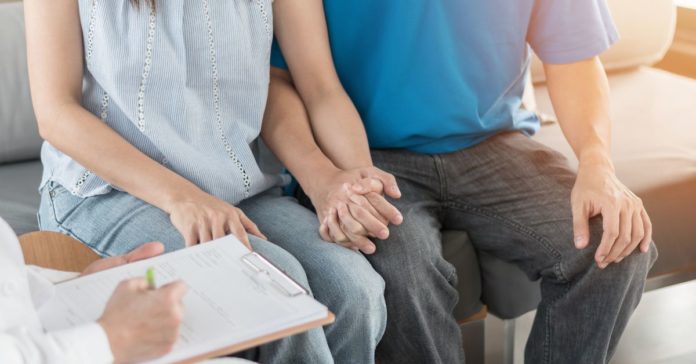Overview
Chlamydia is a sexually transmitted bacterial disease, which is contracted during sexual contact. It affects both males and females. Often, Chlamydia produces no symptoms, but it can lead to fertility problems. However, effective treatment is available. Therefore, it is essential to undergo regular screening to prevent the spread of the disease.
The blog delves deep into Chlamydia infection, its symptoms, diagnosis, and treatment.
What is Chlamydia?
Chlamydia is a sexually transmitted infection (STI) that is caused by bacteria. During the early stages of Chlamydia, 90% of women and 70% of men often have no visible symptoms. Since untreated Chlamydia can lead to severe consequences, it is essential to undergo frequent screenings and discuss concerns with the doctor.
What are the signs and symptoms of chlamydia infection in men and women?
Men
Since most men do not show symptoms of Chlamydia, they fail to notice it. The symptoms usually appear two or three weeks after the transmission. The most common symptoms in men after the transmission include :
- Burning sensation while urinating
- Yellow or green discharge from the penis
- Pain in the lower abdomen
- Pain in the testicle
Sometimes the infection can also occur in the anus. The symptoms during such cases are discharge, pain, and bleeding. If the person has oral intercourse with someone with the virus, they are more likely to get Chlamydia in the throat. A sore throat, cough, or fever are some symptoms of throat chlamydia.
Women
It may take many weeks for a woman to develop symptoms after contracting the STI.
The following are the most prevalent chlamydia symptoms in women:
- Painful sexual intercourse
- Excessive vaginal discharge
- Burning sensation during urination
- Pain in the lower abdomen
- Bleeding between periods
The infection can spread to the fallopian tubes in some women, resulting in a life-threatening condition known as pelvic inflammatory disease (PID).
When to seek medical help?
It is crucial to seek professional medical help if you experience discharge from your genitals, pain during urination, or your sexual partner has Chlamydia.
Call 1860-500-1066 to book an appointment
What are the causes of Chlamydia?
A bacteria named Chlamydia trachomatis – is responsible for this infection. If a person has Chlamydia, they can transmit it through anal, vaginal, or oral sex without a condom or other barrier methods
Pregnant women with Chlamydia can transmit it to their children during natural childbirth.
Complications include:
- Pelvic inflammatory disease
- Pneumonia
- Cervical inflammation
- Enlarged lymph nodes in the groin
What are the complications of untreated Chlamydia?
Women
PID is an infection that can harm the uterus, cervix, and ovaries in particular women. PID is a painful condition that frequently necessitates hospitalization. If untreated, the fallopian tubes may become scarred, resulting in infertility. The infection can be passed on to babies during pregnancy, causing eye infections and pneumonia in neonates.
Men
When Chlamydia is left untreated, it can also cause issues in men. Epididymitis, an inflammation of the coiled tube (epididymis) at the back of the testicle that stores and carries sperm is a common complication.
The infection can extend to the prostate gland, resulting in a fever, painful intercourse, and lower-back discomfort. Male chlamydial urethritis is another possible consequence. These are only a few of the most prevalent side effects of untreated Chlamydia, so it is critical to get medical help immediately. The majority of persons who receive prompt treatment have no long-term medical issues.
How is Chlamydia diagnosed?
If Chlamydia has already started showing symptoms, the doctors perform a physical exam like observing the discharge, sores, and unusual spotting that can be related to the infection. Screening and diagnosis of chlamydia is comparatively simple. Tests include:
- A swab. For men, the doctor inserts a slim swab into the end of the penis to get a sample from urethra. For women, during a routine Pap test, the doctor takes a swab of discharge from the woman’s cervix for antigen or culture testing for chlamydia. In certain cases, the doctor will swab the anus
- A urine test. A sample of your urine is analyzed in the laboratory for presence of this infection
If the test is positive, the patient requires a follow-up consultation, and the doctors may also explore treatment options.
How is Chlamydia treated?
Chlamydia is a treatable infection. Doctors can treat it with antibiotics. The healthcare practitioner advises that the patient and the partner(s) get treated to avoid spreading reinfection and disease.
The patient should strictly follow the dosing guidelines to ensure that the infection is treated completely. This can take up to two weeks. It is important not to have intercourse during the treatment period. Even though Chlamydia is treatable, it’s essential to be safe and avoid further infections.
What are the preventive methods and home remedies for Chlamydia?
Preventive methods
Using a condom during sexual intercourse is the most effective technique for a sexually active person to avoid contracting Chlamydia. To have safe sex, it is essential to :
- Use protection with each sexual act
- Be tested for STIs regularly if there are multiple partners
- Avoid oral sex or use protection during oral sex until a partner gets an STI test
Conclusion
Chlamydia is a sexually transmitted bacterial infection. It often causes no symptoms, but screening can determine whether or not a person needs therapy. If not treated, it can cause complications that may have long-term consequences. As a result, treatment and screening are essential for anyone who might be at risk.


















